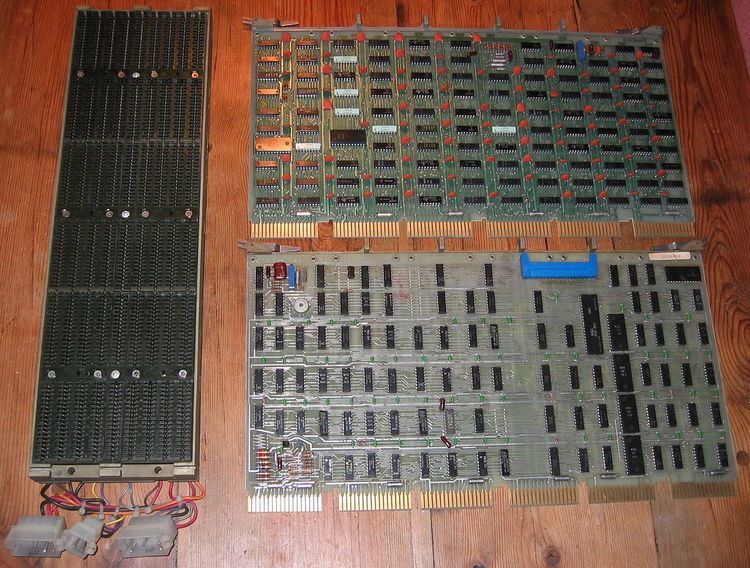Width in bits 18 address, 16 data | ||
 | ||
Year created 1969; 48 years ago (1969) Created by | ||
The Unibus was the earliest of several computer bus and backplane designs used with PDP-11 and early VAX systems manufactured by the Digital Equipment Corporation (DEC) of Maynard, Massachusetts. The Unibus was developed around 1969 by Gordon Bell and student Harold McFarland while at Carnegie Mellon University.
Contents
Technical specifications
The Unibus consists of 72 signals, usually connected via two 36-way edge connectors on each printed circuit board. When not counting the power and ground lines, it is usually referred to as a 56-line bus. It can exist within a backplane or on a cable. Up to 20 nodes (devices) can be connected to a single Unibus segment; additional segments can be connected via a bus repeater.
The bus is completely asynchronous, allowing a mixture of fast and slow devices. It allows the overlapping of arbitration (selection of the next bus master) while the current bus master is still performing data transfers. The 18 address lines allow the addressing of a maximum of 256 kiB. Typically, the top 8 kiBw is reserved for the registers of the memory-mapped I/O devices used in the PDP-11 architecture.
The design deliberately minimizes the amount of redundant logic required in the system. For example, a system always contains more slave devices than master devices so most of the complex logic required to implement asynchronous data transfers is forced into the relatively few master devices. For interrupts, only the interrupt-fielding processor needs to contain the complex timing logic. The end result is that most I/O controllers can be implemented with simple logic, and most of the critical logic is implemented as a custom MSI IC.
Pinout
Type 1 lines are a normal multi-sender wired-OR bus with pull-up resistors at each end of the bus, typically on a terminator card.
Type 2 lines are selectively propagated by each card to the next slot – if the card wants to keep the request grant it will assert the SACK line and not propagate the request to the next slot. If a slot is empty, it is necessary to install a "grant continuity card" in the slot to propagate the four type 2 signals to the next card.
Type 3 signals are generated by the power supply and have only a single sender. They warn the devices on the bus when the power is about to fail, so those devices can execute an orderly shutdown, and disable operations to prevent spurious writes.
The two control lines (C0 and C1) allowed the selection of four different data transfer cycles:
